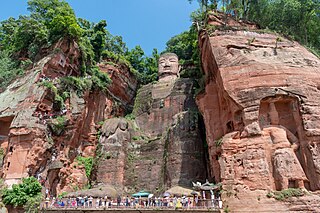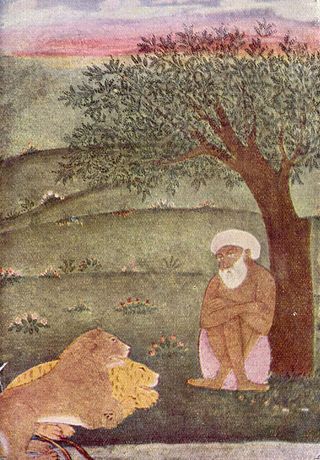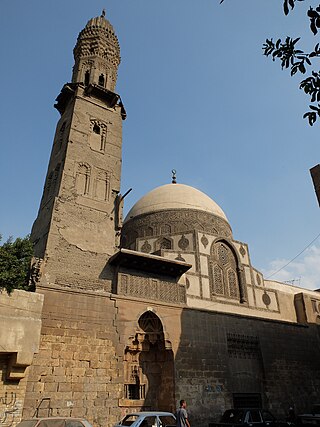
Environmental engineering is a professional engineering discipline related to environmental science. It encompasses broad scientific topics like chemistry, biology, ecology, geology, hydraulics, hydrology, microbiology, and mathematics to create solutions that will protect and also improve the health of living organisms and improve the quality of the environment. Environmental engineering is a sub-discipline of civil engineering and chemical engineering. While on the part of civil engineering, the Environmental Engineering is focused mainly on Sanitary Engineering.

The Seine is a 777-kilometre-long (483 mi) river in northern France. Its drainage basin is in the Paris Basin covering most of northern France. It rises at Source-Seine, 30 kilometres (19 mi) northwest of Dijon in northeastern France in the Langres plateau, flowing through Paris and into the English Channel at Le Havre. It is navigable by ocean-going vessels as far as Rouen, 120 kilometres (75 mi) from the sea. Over 60 percent of its length, as far as Burgundy, is negotiable by large barges and most tour boats, and nearly its whole length is available for recreational boating; excursion boats offer sightseeing tours of the river banks in the capital city, Paris.

Sichuan is a province in Southwest China occupying most of the Sichuan Basin and the easternmost part of the Tibetan Plateau between the Jinsha River on the west, the Daba Mountains in the north and the Yungui Plateau to the south. Sichuan's capital city is Chengdu. The population of Sichuan stands at 83 million. Sichuan neighbors are Qinghai to the northwest, Gansu to the north, Shaanxi to the northeast, Chongqing to the east, Guizhou to the southeast, Yunnan to the south, and the Tibet Autonomous Region to the west.

The Canal du Midi is a 240 km (150 mi) long canal in Southern France. Originally named the Canal Royal en Languedoc and renamed by French revolutionaries to Canal du Midi in 1789, the canal is considered one of the greatest construction works of the 17th century.

The Mevlevi Order or Mawlawiyya is a Sufi order that originated in Konya, Turkey and which was founded by the followers of Jalaluddin Muhammad Balkhi Rumi, a 13th-century Persian poet, Sufi mystic, and Islamic theologian. The Mevlevis are also known as the "whirling dervishes" due to their famous practice of whirling while performing dhikr. Dervish is a common term for an initiate of the Sufi path; whirling is part of the formal sema ceremony and the participants are properly known as semazens.

The Tower of the Winds, also known by other names, is an octagonal Pentelic marble tower in the Roman Agora in Athens, named after the eight large reliefs of wind gods around its top. Its date is uncertain, but was by about 50 BC at the latest, as it was mentioned by Varro in his De re Rustica of about 37 BC. It is "one of the very small number of buildings from classical antiquity that still stands virtually intact", as it has been continuously occupied for a series of different functions.

Dervish, Darvesh, or Darwīsh in Islam can refer broadly to members of a Sufi fraternity (tariqah), or more narrowly to a religious mendicant, who chose or accepted material poverty. The latter usage is found particularly in Persian and Turkish (derviş) as well as in Amazigh (Aderwish), corresponding to the Arabic term faqīr. Their focus is on the universal values of love and service, deserting the illusions of ego (nafs) to reach God. In most Sufi orders, a dervish is known to practice dhikr through physical exertions or religious practices to attain the ecstatic trance to reach God. Their most popular practice is Sama, which is associated with the 13th-century mystic Rumi. In folklore and with adherents of Sufism, dervishes are often credited with the ability to perform miracles and ascribed supernatural powers. Historically, the term Dervish has also been used more loosely, as the designation of various Islamic political movements or military entities.

The London sewer system is part of the water infrastructure serving London, England. The modern system was developed during the late 19th century, and as London has grown the system has been expanded. It is currently owned and operated by Thames Water and serves almost all of Greater London.

Antoine Augustin Cournot was a French philosopher and mathematician who also contributed to the development of economics.

Eugene de Blaas, also known as Eugene von Blaas or Eugenio Blaas, was an Italian painter in the school known as Academic Classicism.

Kudsi Erguner is a Turkish musician. He is considered a master of traditional Mevlevi Sufi music and is one of the best-known players of the Turkish ney flute.

Eugène Belgrand was a French engineer who made significant contributions to the modernization of the Parisian sewer system during the 19th century rebuilding of Paris. Much of Belgrand's work remains in use today.

The history of water supply and sanitation is one of a logistical challenge to provide clean water and sanitation systems since the dawn of civilization. Where water resources, infrastructure or sanitation systems were insufficient, diseases spread and people fell sick or died prematurely.

The Menua canal, also known as the Semiramis canal or as the Shamiram canal, is a canal joined with a series of hydraulic works such as aqueducts constructed by King Menua of Urartu. It is located to the east of Van, Turkey and runs 56 kilometers, supplying a large region and flowing into Lake Van. It is considered a masterpiece of Anatolian and global hydraulic and architectural engineering.

The Cloaca Circi Maximi or Cloaca Circi was one of the three main sewers in ancient Rome. Alongside the Cloaca Maxima and Chiavicone dell'Olmo

Tashan Weir also called Tuoshan Weir or Tuoshanyan is an ancient dam that was erected under Emperor Tang Wenzong during the Tang dynasty in 833. The dam is located in Tashanyan Village, Yinjiang Town, Haishu District, Ningbo, Zhejiang, China. Originally designed under the supervision of Wang Yuanwei, who was the administrator of Yin County, the dam was constructed to prevent tidal sea water from accessing the banks of the Fenghua River and to store water during periods of severe drought. The dam later became part of a large-scale irrigation system serving Ningbo City. This infrastructure is particularly notable because it is recognized as a historical site protected by the state.

The Madrasa of Amir Sunqur Sa'di, also commonly known as the Mausoleum of (Sheikh) Hasan Sadaqa, is a medieval Mamluk-era madrasa structure and mausoleum in Cairo, Egypt. It was originally built between 1315 and 1321 CE by amir Sunqur Sa'di. Sunqur was forced to leave Egypt in his lifetime and was never buried there, but a sheikh known as Hasan Sadaqa was later buried in it and therefore the building is often known by his name. From the 17th century onward the complex was converted into Mevlevi Sufi lodge and is open today as the Mawlawiyya Museum or Museo Mevlevi.

The Forterre is a small natural region on the western edge of the French region of Bourgogne-Franche-Comté.
The Water-Carrier Is Dead is an Egyptian-Tunisian film released on November 20, 1977. The film was directed by Salah Abu Seif and produced by Youssef Chahine. Its screenplay, written by Mohsen Zayed, is based on a 1952 novel by Yusuf Sibai. The Water-Carrier Is Dead stars Ezzat El Alaili, Farid Shawqi, Shwikar, Amina Rizk, Taheyya Kariokka, and Nahid Jabr.






























